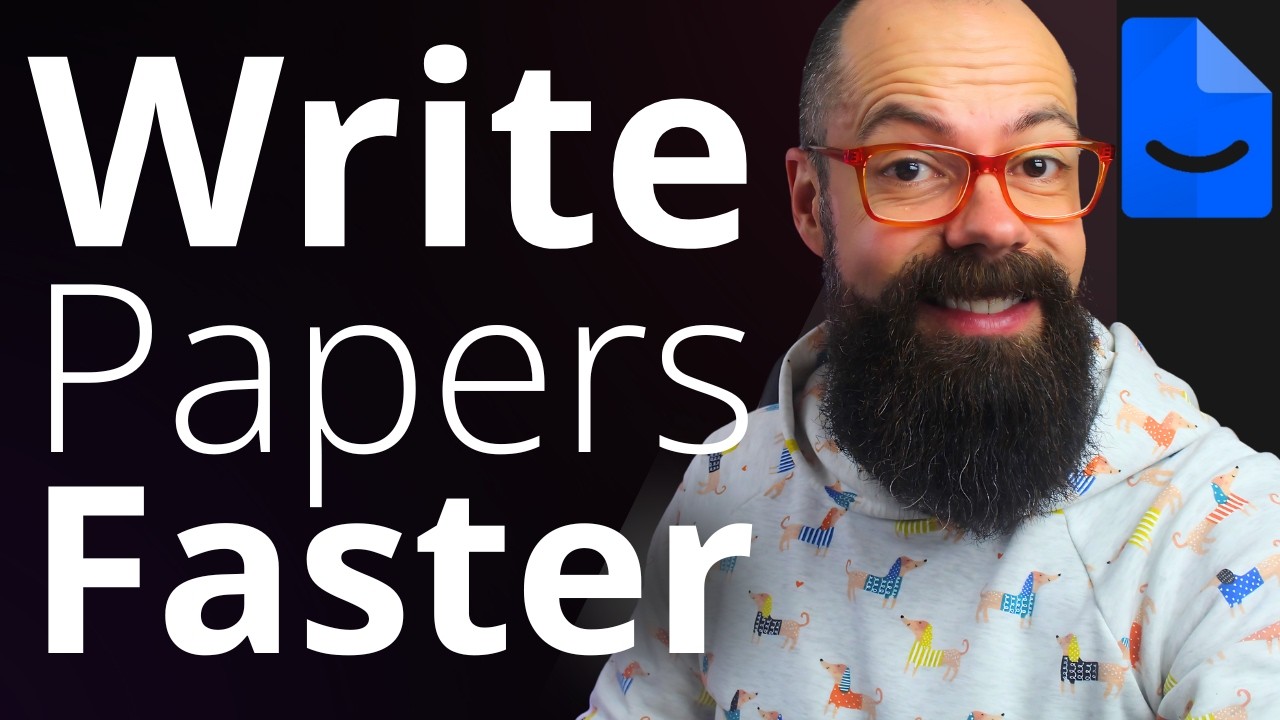The video introduces an AI-powered tool that significantly speeds up the research and writing process for academic papers by automating tasks like literature gathering, summarizing, and outlining. It highlights how this tool helps users produce high-quality, original research papers more efficiently, making it an essential resource for students and researchers.
The video introduces an AI-powered tool that significantly speeds up the research and writing process for academic papers by automating tasks like literature gathering, summarizing, and outlining. It highlights how this tool helps users produce high-quality, original research papers more efficiently, making it an essential resource for students and researchers.
The video titled “Write Better Research Papers 10x Faster (Best AI Tool for Research Papers)” introduces viewers to an innovative AI-powered tool designed to significantly streamline the research and writing process for academic papers. It emphasizes how traditional methods of conducting research and composing papers can be time-consuming and often overwhelming, especially for students and researchers juggling multiple tasks. The AI tool aims to address these challenges by automating key aspects of research, enabling users to produce high-quality papers more efficiently.
The video demonstrates the core features of the AI tool, highlighting its ability to quickly gather relevant literature, summarize complex articles, and organize information coherently. Users can input their research topics or questions, and the AI will fetch pertinent sources, saving hours of manual searching. Additionally, the tool can generate concise summaries of lengthy research papers, making it easier for users to understand and incorporate essential points into their own work. This functionality helps in rapidly building a solid foundation for writing.
Furthermore, the video showcases how the AI assists in structuring the research paper itself. It can suggest outlines, help formulate thesis statements, and even generate sections of text based on the gathered information. This feature is particularly useful for overcoming writer’s block and ensuring that the paper maintains a logical flow. The AI’s ability to produce coherent drafts accelerates the writing process, allowing researchers to focus more on analysis and critical thinking rather than on initial drafting.
The presenter also discusses the benefits of using this AI tool in terms of quality and originality. It helps ensure that citations are accurate and that the content remains plagiarism-free by generating unique text and properly referencing sources. The tool’s integration with various academic databases and citation managers further enhances its utility, making it a comprehensive solution for research paper creation. The overall message is that leveraging AI can drastically reduce the time and effort required, leading to better, faster research outputs.
In conclusion, the video advocates for adopting AI technology to revolutionize academic research and writing. It encourages viewers to try the tool to experience firsthand how it can improve productivity, enhance the quality of research papers, and help meet tight deadlines. By automating routine tasks and providing intelligent assistance, the AI tool is positioned as an essential resource for students, researchers, and academics aiming to write better research papers in a fraction of the traditional time.
The video titled “Write Better Research Papers 10x Faster (Best AI Tool for Research Papers)” introduces viewers to an innovative AI-powered tool designed to significantly streamline the research and writing process for academic papers. It emphasizes how traditional methods of conducting research and composing papers can be time-consuming and often overwhelming, especially for students and researchers juggling multiple tasks. The AI tool aims to address these challenges by automating key aspects of research, enabling users to produce high-quality papers more efficiently.
The video demonstrates the core features of the AI tool, highlighting its ability to quickly gather relevant literature, summarize complex articles, and organize information coherently. Users can input their research topics or questions, and the AI will fetch pertinent sources, saving hours of manual searching. Additionally, the tool can generate concise summaries of lengthy research papers, making it easier for users to understand and incorporate essential points into their own work. This functionality helps in rapidly building a solid foundation for writing.
Furthermore, the video showcases how the AI assists in structuring the research paper itself. It can suggest outlines, help formulate thesis statements, and even generate sections of text based on the gathered information. This feature is particularly useful for overcoming writer’s block and ensuring that the paper maintains a logical flow. The AI’s ability to produce coherent drafts accelerates the writing process, allowing researchers to focus more on analysis and critical thinking rather than on initial drafting.
The presenter also discusses the benefits of using this AI tool in terms of quality and originality. It helps ensure that citations are accurate and that the content remains plagiarism-free by generating unique text and properly referencing sources. The tool’s integration with various academic databases and citation managers further enhances its utility, making it a comprehensive solution for research paper creation. The overall message is that leveraging AI can drastically reduce the time and effort required, leading to better, faster research outputs.
In conclusion, the video advocates for adopting AI technology to revolutionize academic research and writing. It encourages viewers to try the tool to experience firsthand how it can improve productivity, enhance the quality of research papers, and help meet tight deadlines. By automating routine tasks and providing intelligent assistance, the AI tool is positioned as an essential resource for students, researchers, and academics aiming to write better research papers in a fraction of the traditional time.
